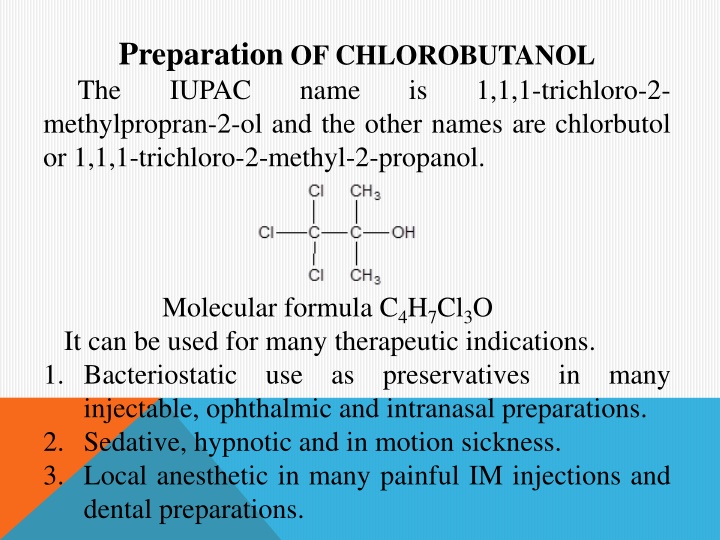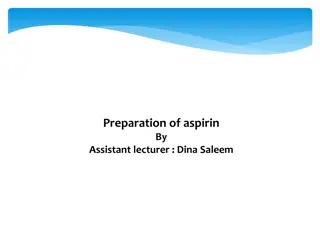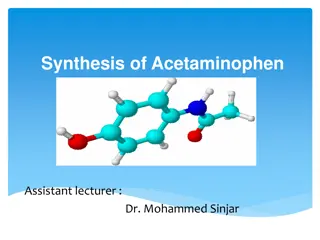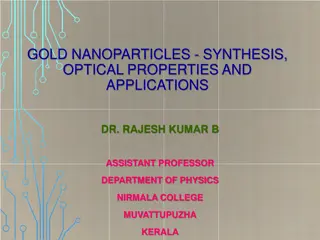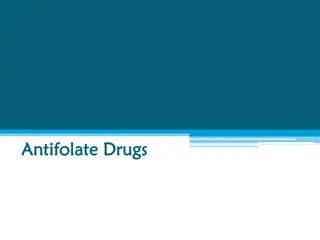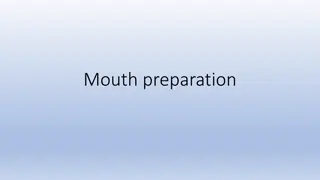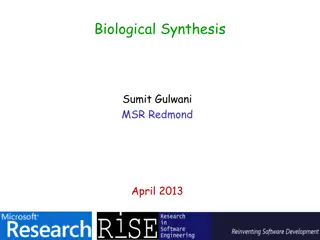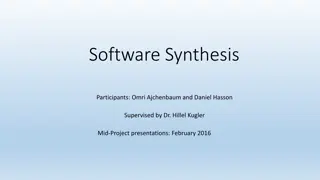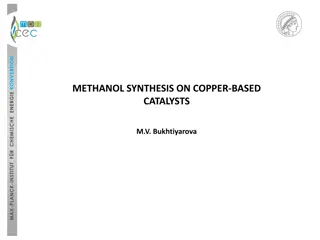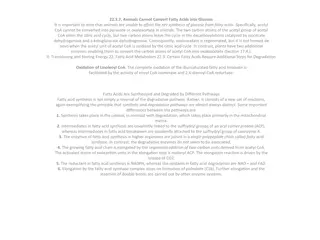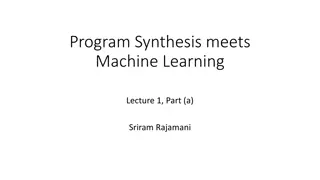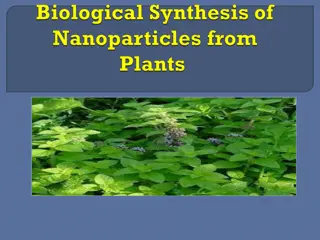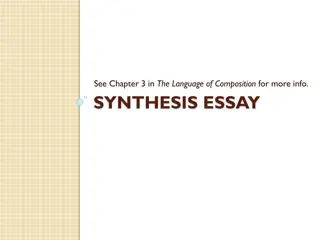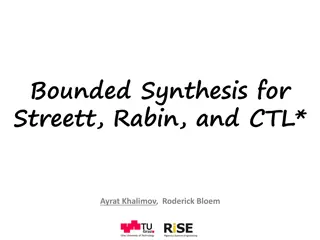Preparation of Chlorobutanol: Synthesis and Applications
Chlorobutanol, also known as 1,1,1-trichloro-2-methyl-2-propanol, is synthesized from acetone and chloroform using KOH. It has various therapeutic uses such as bacteriostatic preservation, sedation, and local anesthesia. Learn about its physical properties, preparation process, and potential applications in healthcare.
Download Presentation

Please find below an Image/Link to download the presentation.
The content on the website is provided AS IS for your information and personal use only. It may not be sold, licensed, or shared on other websites without obtaining consent from the author.If you encounter any issues during the download, it is possible that the publisher has removed the file from their server.
You are allowed to download the files provided on this website for personal or commercial use, subject to the condition that they are used lawfully. All files are the property of their respective owners.
The content on the website is provided AS IS for your information and personal use only. It may not be sold, licensed, or shared on other websites without obtaining consent from the author.
E N D
Presentation Transcript
Preparation OF CHLOROBUTANOL The IUPAC name methylpropran-2-ol and the other names are chlorbutol or 1,1,1-trichloro-2-methyl-2-propanol. is 1,1,1-trichloro-2- Molecular formula C4H7Cl3O It can be used for many therapeutic indications. 1. Bacteriostatic use as preservatives in many injectable, ophthalmic and intranasal preparations. 2. Sedative, hypnotic and in motion sickness. 3. Local anesthetic in many painful IM injections and dental preparations.
Physical properties: It is white crystalline powder found in two forms: anhydrous and hydrated, also it has characteristic camphor-like odor and taste. The melting point is 95-99 C and boiling point is 167 C It is freely soluble in alcohol (1:1) slightly soluble in cold water (1:125) and more soluble in boiling water but such high temperature may lead to hydrolysis of chlorobutanol. Cl CH3 O Cl C C OH H3C C CH3 + 3HCl + CO2 H2O Cl CH3
So it must be recrystallized from water/alcohol mixture. Water is not good solvent for recrystallization and often hydroalcoholic mixtures are used for this purpose. Preparation of chlorobutanol: It is prepared from acetone and chloroform using KOH to give chlorobutanol. O Cl CH3 alcoholic KOH H3C C CH3 CHCl3 Cl C C OH + H2O + KCl Cl CH3
Chlorbutanol is formed by the simple nucleophilic addition of chloroform and acetone, this reaction is base driven by potassium or sodium hydroxide. Alcoholic KOH is used in order to accelerate the reaction towards formation of chlorobutanol.
Procedure: 1. In a dry conical flask about 500 ml put 50 g of acetone with 20 g of chloroform. 2. Cool the mixture. 3. Alcoholic solution is prepared from dissolving 3.5 g of KOH in the minimum amount of ethanol (rectified spirit). 4. Add Alcoholic solution in step 3 to the mixture of step 2. 5. Filter the precipitated KCl and wash it twice with small portions of acetone. 6. Evaporate in water bath. 7. Recryastallize from the mixture of water and ethanol.
